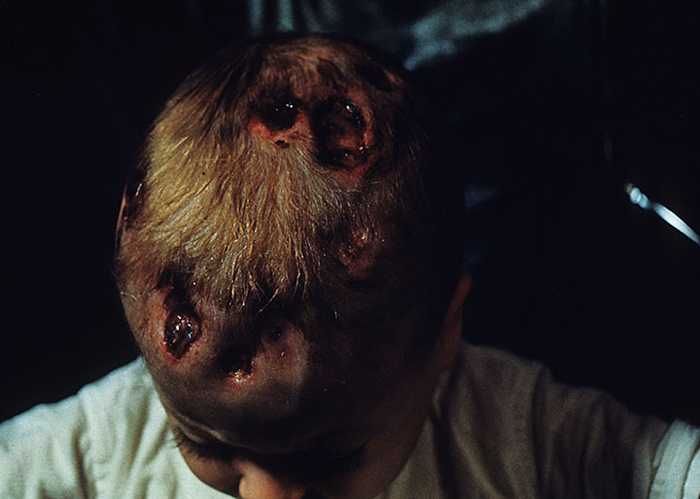
Langerhans cell histiocytosis (LCH) is an idiopathic group of disorders characterized histologically by proliferation and infiltration of tissue by Langerhans cell-type histiocytes that fuse into multinucleated giant cells and form granulomas with eosinophils. LCH is characterized clinically by cutaneous findings that range from soft tissue swelling to eczema-like and seborrheic dermatitis-like changes and ulceration and by lytic bony lesions.
Causes of Langerhans Cell Histiocytosis
The stimulus for the proliferation of Langerhans cells is unknown.
Symptoms of Langerhans Cell Histiocytosis
- Rash
- A painful lump on a bone
- Limping
- Delayed puberty
- Bone pain
- Seizures
- Increased eyeball protrusion
- Generalized rash (petechiae or purpura)
- Chronically draining ears
The symptom underlying all of these signs are histiocytic lesions on skin, bones, lung, liver, spleen, gums, ears, eyes, and/or the central nervous system.
Diagnosis
Confirmation of diagnosis by biopsy (skin, bone, or soft tissue/internal organs). Since skin is the organ most frequently involved after bone, skin biopsies have great diagnostic significance.
Treatment
Unifocal LCH Curettage with or without bony chip packing. Low-dose (300 to 600 rad) radiotherapy. Extraosseous soft tissue lesions: surgical excision or low-dose radiotherapy.
Multifocal LCH Diabetes insipidus and growth retardation treated with vasopressin and human growth hormone. Low-dose radiotherapy to bony lesions. Systemic treatment with glucocorticoids or vinblastine, mercaptopurine, and methotrexate, given as single agents or in combination, also with epipodophyllotoxin (etoposide). Topical glucocorticoids for discrete cutaneous lesions. Cutaneous lesions respond best to PUVA or topical nitrogen mustard but also to thalidomide.
LSS Only a few controlled studies of chemotherapy exist. The use of vinblastine results in complete or partial remission in 55%; combination chemotherapy in 70%. PUVA is effective in cutaneous lesions.
References